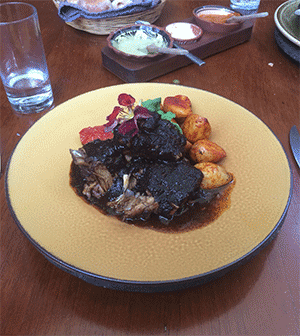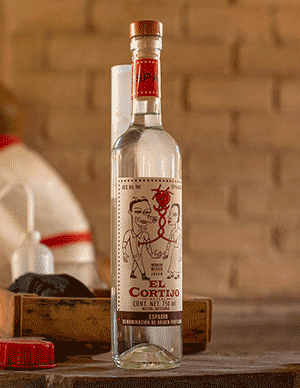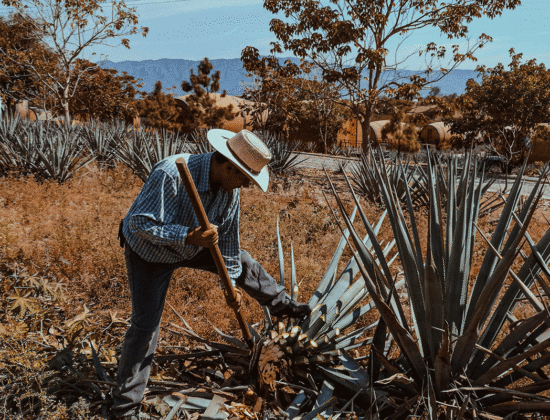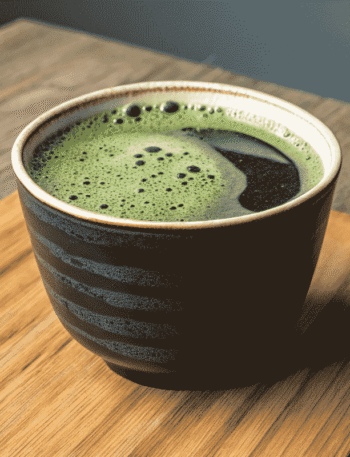If you enjoy tequila, chances are you’ve heard of mezcal. It’s that mysterious spirit that smells a bit smoky and feels full of character. But what exactly is mezcal, and how is it different from tequila? The answer takes us deep into the agave fields of Mexico, especially Oaxaca, where mezcal is more than just a drink—it’s a tradition, a craft, and a way of life.
Mezcal vs. Tequila: What’s the Difference?
Both mezcal and tequila are distilled spirits made from the agave plant, but there are some key differences between them. That said, however, tequila is really a type of mezcal.
Agave Varieties: Tequila can only be made from one type of agave, called Blue Weber agave. Mezcal, on the other hand, can be made from many different types of agave—more than 30 varieties, in fact. Some common ones include espadín, tobalá, madrecuixe, and tepeztate. Each one contributes its own flavor and character to the final spirit.
Regions: Tequila is produced mostly in the state of Jalisco and a few surrounding areas. Mezcal can be made in several regions across Mexico, but the heart of mezcal production is in Oaxaca. In some parts of Oaxaca, mezcal is more common than beer or soda.
Production Methods: Tequila is typically produced in large factories using modern equipment. Mezcal is often made using more traditional, small-batch techniques. The agave hearts, called piñas, are roasted in underground pits, which imparts mezcal with its distinctive smoky flavor. After roasting, the piñas are crushed, fermented, and then distilled in clay or copper stills. The whole process is slow, meticulous, and deeply connected to local culture.
A Spirit With Depth and Variety
Mezcal isn’t just one flavor. Since it can be made from many types of agave and is often handcrafted, the variety is extensive. Some mezcals are light and grassy, while others are bold and earthy. Some have notes of tropical fruit or black pepper. Others are floral or even minty. No two mezcals taste exactly alike.
Many mezcal producers still harvest wild agave, meaning the plants are not farmed but gathered from the hills. These wild agaves grow for 10, 15, or even 25 years before harvest. This lengthy growth period makes wild mezcal rare and costly, but the flavor can be exceptional. Tobalá and tepeztate are two well-known wild agaves, often sought after by collectors and connoisseurs.
Pechuga: A Unique Type of Mezcal
One special type of mezcal is called pechuga, which means “breast” in Spanish. To make pechuga, the mezcal is distilled a second or third time with added fruits, spices, and a piece of raw meat, usually chicken or turkey breast. The meat hangs inside the still during distillation, imparting a savory, rich flavor to the final product. I once sampled pechuga mezcal in Mexico City, and though I could tell it was a top-shelf liquor, I still couldn’t really taste the richness that so many claim. Perhaps it is more of a tradition than an absolute necessity.
Pechuga mezcal is a traditional drink used in ceremonies and celebrations. You won’t find it in every bar, but if you’re curious about mezcal’s more unusual and complex expressions, it’s worth seeking out.
Drinking Mezcal: Sipping, Not Shooting
Mezcal is meant to be sipped slowly, not taken as a shot. In Mexico, it’s often served in small clay cups or wide glasses. Locals say, “Mezcal is for kissing, not shooting,” which means you should take your time and enjoy it.
You might also see mezcal served with orange slices and a bit of sal de gusano, which is a salty mix that includes ground-up worms, chilies, and spices. It may sound odd, but the flavor pairing works beautifully with the smoky notes of the spirit.
Mezcal in Cocktails
While mezcal is great on its own, it also works well in cocktails. Its smoky character adds depth to drinks and can even replace whiskey or tequila in classic recipes. I’ve found that certain types of mezcal work especially well in cocktails, particularly espadín. It’s the most common variety and often one of the smokiest, which gives drinks a bold, distinctive flavor and stands up well when mixers are used. Here are a few common mezcal cocktails:
Mezcal Margarita: Swap out the tequila for mezcal in your favorite margarita recipe. You’ll get a smoky twist that’s still refreshing.
Oaxacan Old Fashioned: A mix of mezcal, agave syrup, and bitters. It’s bold, smooth, and full of personality.
Mezcal Mule: Mezcal, ginger beer, and lime juice. Like a Moscow Mule, but with a rich, earthy backbone.
Naked and Famous: This modern cocktail combines mezcal, yellow Chartreuse, Aperol, and lime juice for a balanced and vibrant drink.
If you’re new to mezcal, cocktails are a great way to start. You get to enjoy the flavor without being overwhelmed by the smokiness.
Mezcal in Cooking
Beyond the bar, mezcal can also be used in the kitchen. Its deep flavor adds complexity to sauces, marinades, and even desserts. Try it in a citrus and mezcal marinade for grilled meats, or add a splash to a chocolate sauce for a special treat. You can also use it to flambé fruit or add a smoky note to baked goods.

A few chefs in Mexico and abroad have started using mezcal like a fine wine or whiskey, pairing it with food or using it in recipes that highlight its unique flavor.
On one of my visits to Oaxaca, I tried candied pork ribs with Salsa Borracha at Las Danzantes. It has to be one of the most memorable dining experiences I’ve had. Salsa Borracha can be made with beer or mezcal. This particular entree was made with mezcal, and I could not have been happier with my choice.
Buying Mezcal in Oaxaca
In Oaxaca, mezcal is everywhere. You’ll find it in grocery stores, markets, and roadside stands. One of the most interesting parts of Oaxacan mezcal culture is that you can sometimes buy it from a tap. Local producers will fill your bottle—any bottle you bring—with fresh mezcal straight from the batch.
These producers often make their mezcal with wild agaves or rare blends. The flavor varies from one family or village to another, and part of the fun is trying different kinds to see what you like best.
When buying mezcal, especially in Oaxaca, it’s common to ask for a taste before you choose. Vendors are happy to let you sample a few different bottles. You’ll quickly learn that no two are the same.

On my first visit to Oaxaca, I bought my first bottle of mezcal from a local mezcaleria. I tried several. Some of the bottles were truly impressive, featuring graphics rooted in mystical Mexican folklore. One of my favorite bottles, unfortunately, was one that I liked the taste of the least at first. The lady working the bar then gave me a printed sheet that was all about mezcal and how to drink it. She told me to take a sip, hold it to the roof of my mouth with my tongue, then swallow and exhale simultaneously. When I followed her instructions, the flavors really popped. Not only that, but the bottle that I really liked became my favorite in terms of flavor. Needless to say, I bought the bnottle of El Cortijo, and though it is now empty, I still have the bottle. See photo!
Supporting Local Producers
Many mezcal brands in stores are owned by large companies. But in Oaxaca, much of the mezcal is still made by small families or cooperatives. Buying directly from these makers supports traditional farming and distillation methods. It also helps preserve wild agave and protect mezcal’s cultural roots.
If you’re visiting Oaxaca or buying online, look for mezcal that lists the agave type, the name of the distiller (called the maestro mezcalero), and the village of origin. These details show that it’s a handcrafted product made with care.
Final Thoughts
Mezcal is more than just a smoky spirit. It’s a reflection of place, tradition, and time. Every bottle tells a story about the agave it came from, the people who made it, and the land where it grew.
If you’ve only had tequila, mezcal might surprise you. It’s richer, bolder, and often more complex. Whether you enjoy it neat, in a cocktail, or as part of a dish, mezcal has a way of making an impression.
As you explore mezcal, keep an open mind and try different types. Taste one made from espadín, then one from tobalá or madrecuixe. Try a pechuga if you get the chance. Visit Oaxaca if you can and experience it at the source.
And remember, mezcal is meant to be enjoyed slowly. Sip, savor, and let the flavors tell their story.


